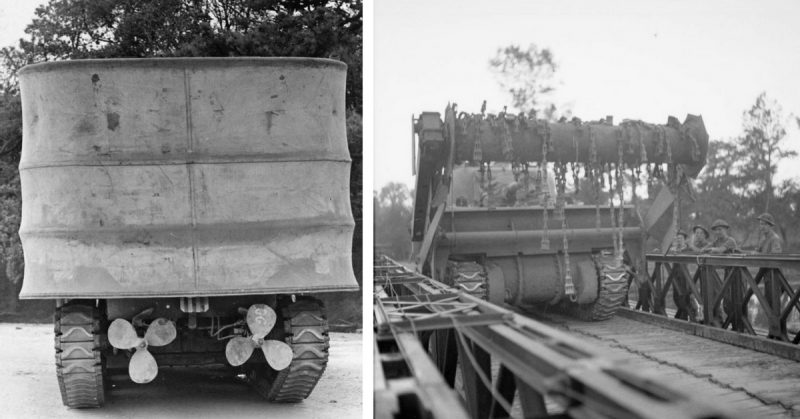In preparation for the Allied invasion of France on June 6, 1944, engineers and designers were hard at work to create a variety of machines that would serve specific tasks needed to create a successful landing and breakout.
The utility of these vehicles varied from engineering duties, to recovery, to specialized weaponry and even some ad-hoc implements were installed once the troops had secured their beach heads and were ready to breakout into the Norman countryside.
Of course, the military had special designations for many of these specialized armored vehicles, but the troops quickly created their own as well. They were often referred to as “Hobart’s Funnies”, “Crabs”, “Rhinos”, etc.
Each one of these modifications had a specific purpose necessary to the overall success of the D-Day landings and while they may have looked unusual, they were designed for serious business. For the Allies, a successful landing and breakout was imperative.
Here are some of the variants with photos used during and following the Allied invasion of Normandy.
DD tanks
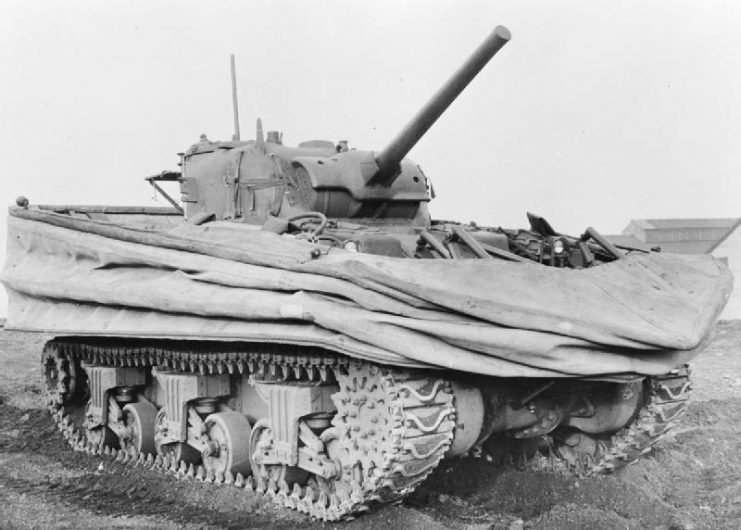
The Sherman Duplex Drive (DD) tank was designed to remain waterproof and use a secondary propulsion system in order to bring it onto the beaches during D-Day. They were skirted in inflatables to provide flotation and could be steered by the commander or the driver. In water they could move at about 4 knots in waves of up to about 1 ft. They were commonly called “Donald Ducks”.
The Sherman DD’s had mixed results in the landing operations on D-Day. On many beaches, they operated without many issues and most of them made it to shore. Unfortunately for the soldiers at Omaha beach, nearly all the DD’s failed to make it to shore. This was one factor in the increased casualty rate at Omaha as the DD’s were supposed to provide fire support.
There are a variety of circumstances that led to the poor performance at Omaha. These center mostly on the conditions of the sea at the time of landing and the distance to shore. The waves were at 6 feet and they were hitting the DD’s in the side as the crews tried to make directly for shore.
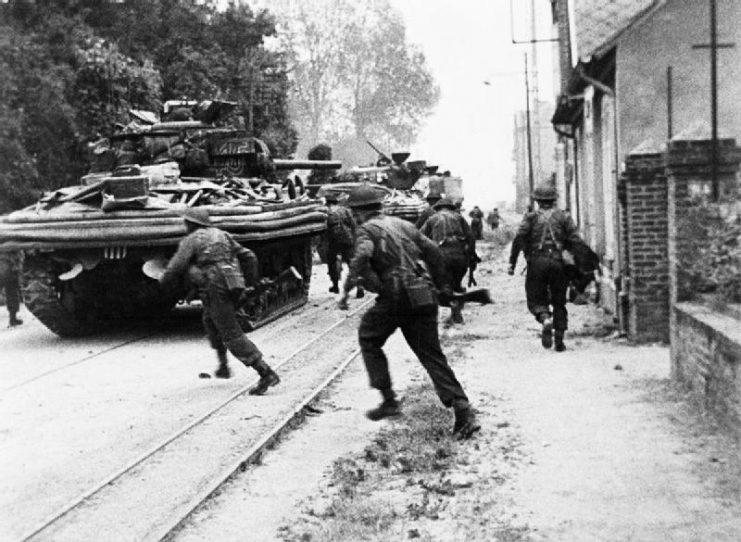
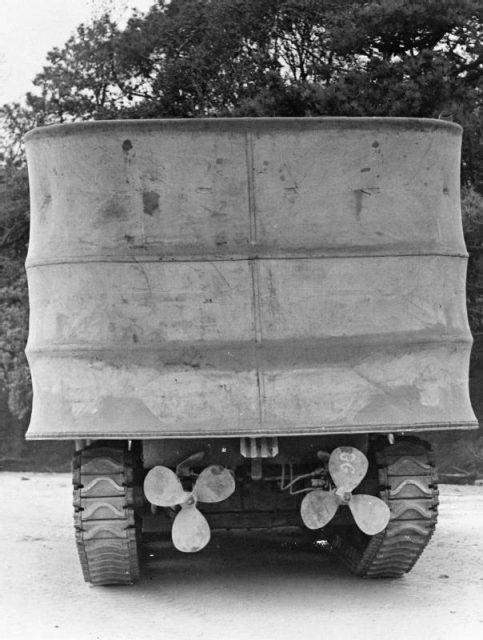
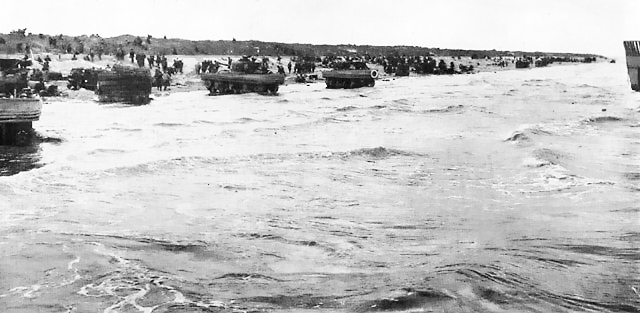
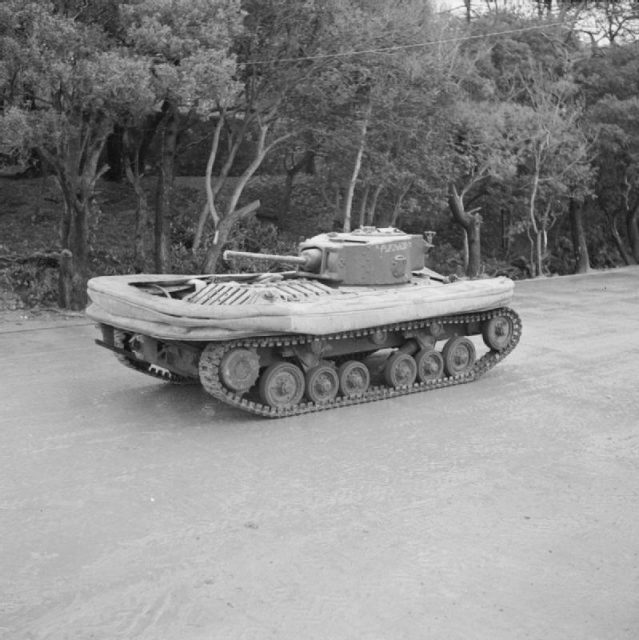
Churchill AVRE with bobbin
The Churchill “carpetlayer” was designed to give allied armor and vehicles a passable road to beach “exit areas”. The sands at Normandy varied slightly from beach to beach, but generally was too soft to support many of the allied vehicles needed to support an advance. These modify Churchills were specifically created to speed up this process.
Troops were assigned the task of creating 8 exit points on the beaches for armor and other vehicles to exit. Once those exits were secure, the engineer groups would quickly prepare them for an allied breakout. This was particularly important for the British troops at Sword beach whose mission was to take the city of Caen 15 km away from their landing zone.
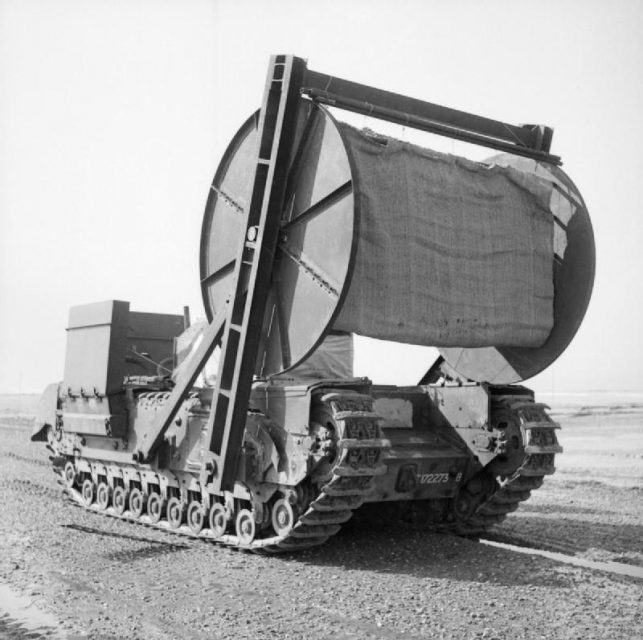
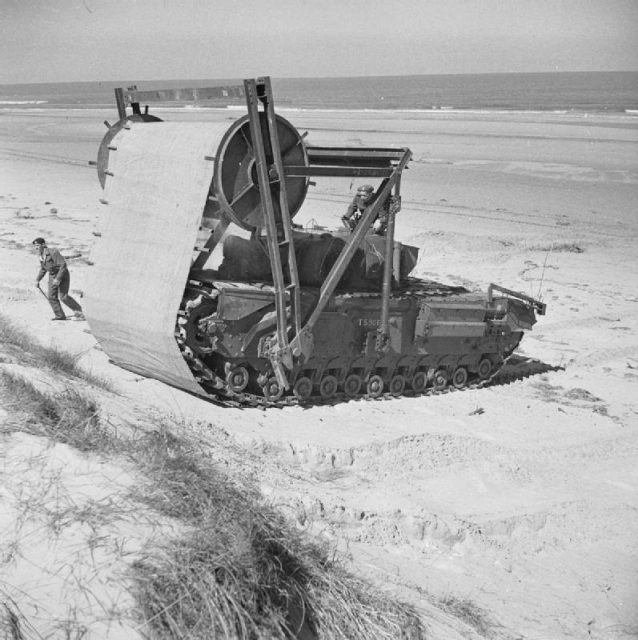
AVRE
The AVRE stood “officially” for Assault Vehicle Royal Engineers, but it’s development as well as many of the unusual armor designs for the invasion were kept secretively. One aspect about this vehicle that was very clear was it’s large 290mm Petard Mortar.
The mortar had a limited effective range of about 80 yards (a maximum of about 230). However, it could propel both a 26 pound and a 75 pound high explosive charge making it extremely effective against difficult targets especially those where no direct line of sight was available.
The value of such an armored support weapon in the bunkered environment of the Atlantic Wall or the hedgerows of Normandy was significant.
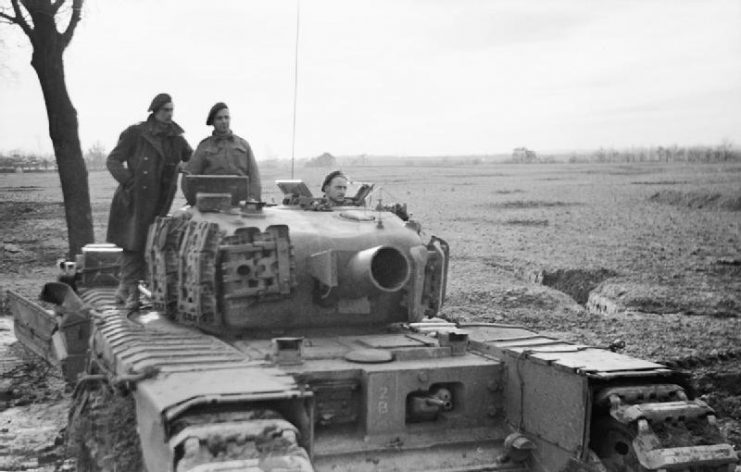
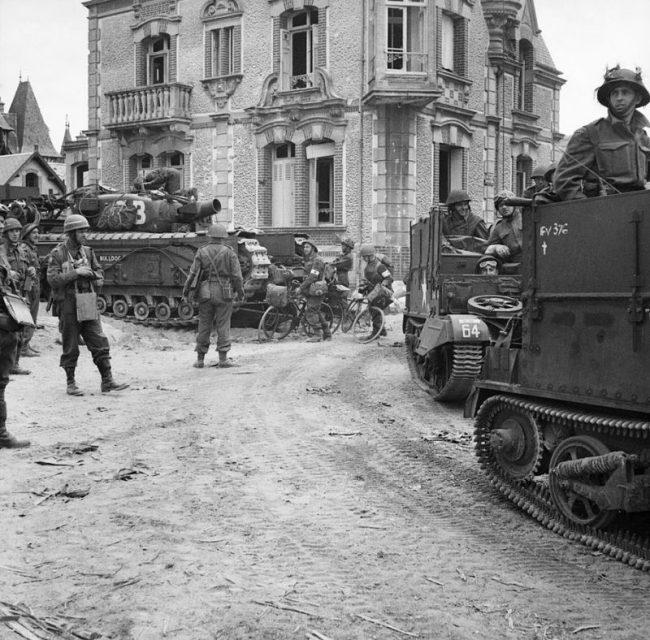
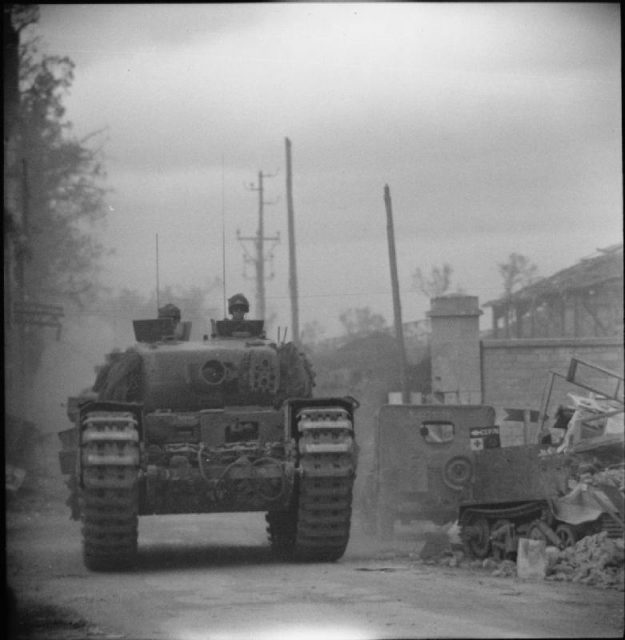
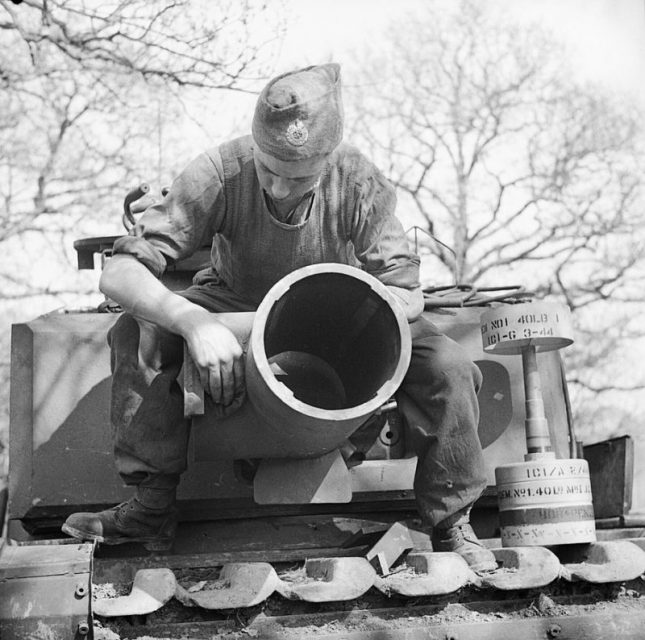
AVRE Carrying Fascine
The use of fascine by engineers was essential in the quick construction of bridges over the many obstacles and ravines that make up the Norman countryside. The Allies needed not only to create beach heads, but they needed to be able to break out of those positions quickly before German Panzer units could respond with counter-attacks.
Therefore, armored units that could easily traverse difficult terrain and provide protection to the valuable engineers that would oversee the construction of these bridges was imperative.
The Churchill AVRE models were perfect for this important task with their flat bases to support transporting the awkward fascine.
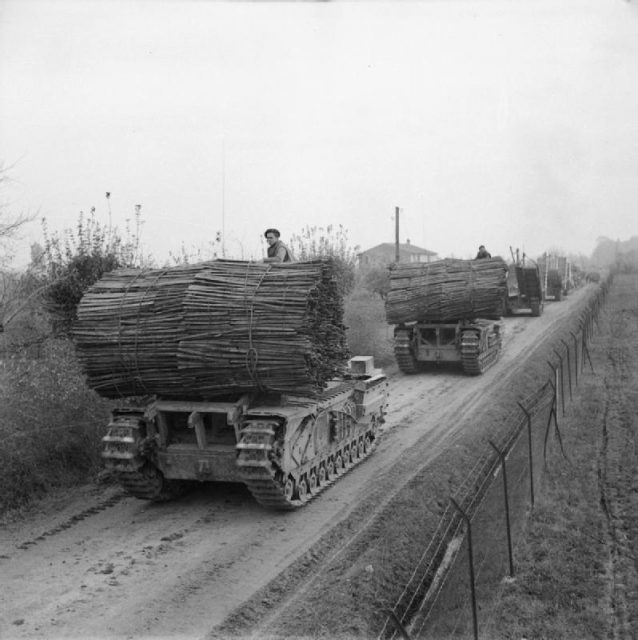
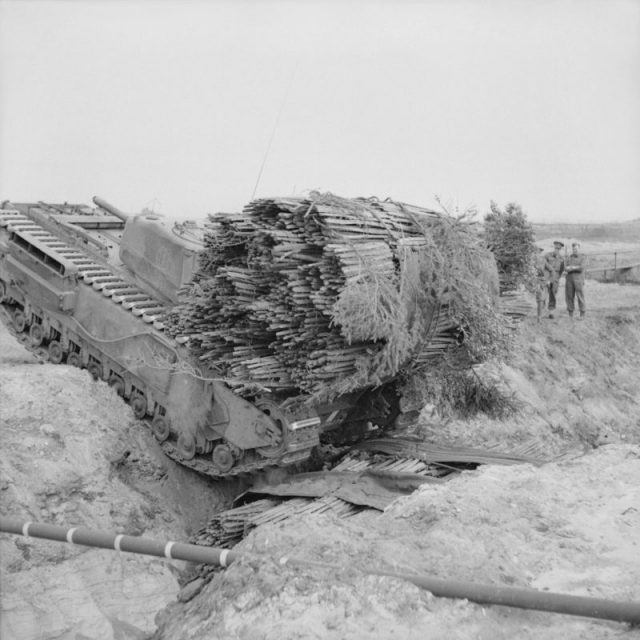
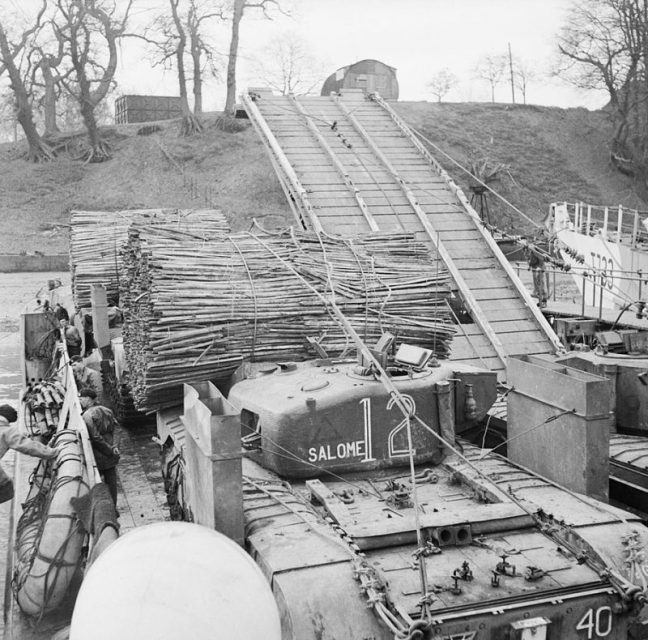
Centaur dozer
Armored “Bulldozers” were necessary for many obvious reasons such as clearing debris and leveling areas needed for quick construction projects. However, they were also very useful in removing obstacles on the beaches and shorelines where the invasion took place.
The invasion was initiated at low tide, which exposed many of the mines and other obstacles that could impede allied landings. The engineers landed early in order to clear these obstructions before the tide returned and began to hide these potential threats.
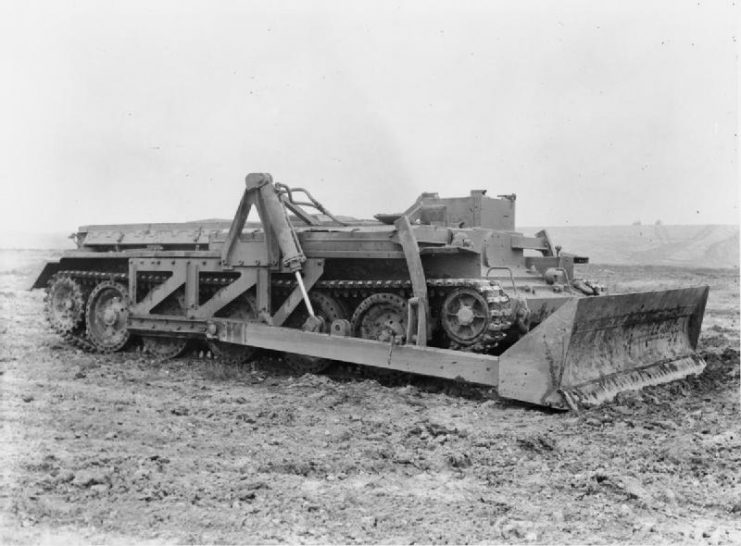
ARK
The ARK was much more than a bridgelayer at Normandy and elsewhere. It was a helping hand to armor and vehicles stuck in areas that could not be traversed. This unique design provided quick access for vehicles to support troops or escape unfavorable conditions.
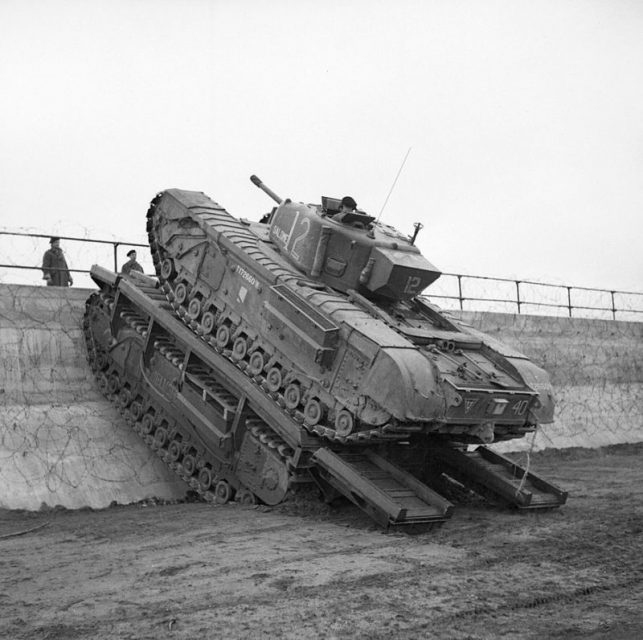
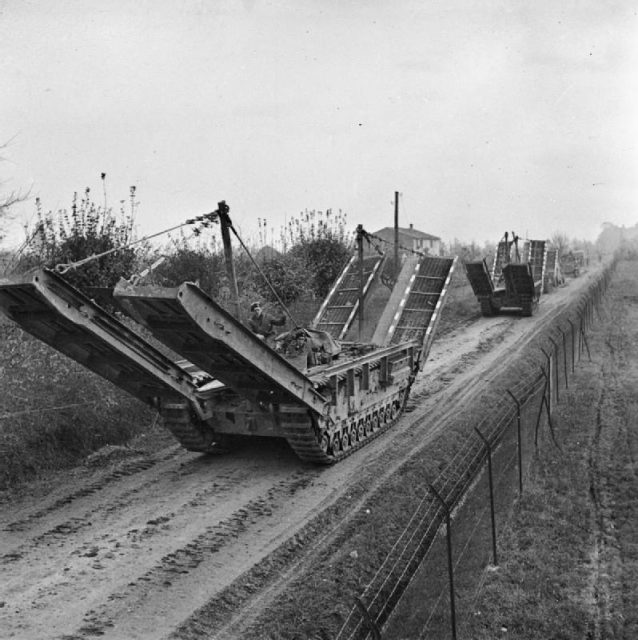
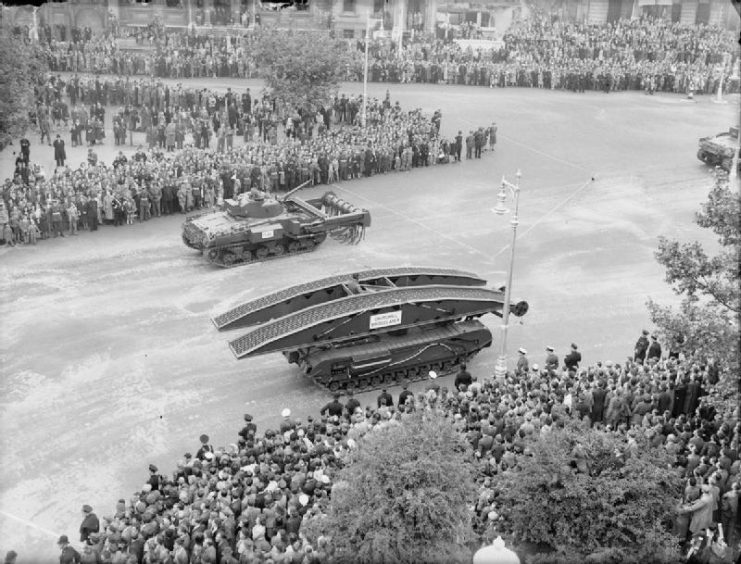
Bridgelayer
Bridgelayers are fairly self-explanatory, but having the armored crocodile in this role gave the engineering unit far more mobility as well as security during construction operations.
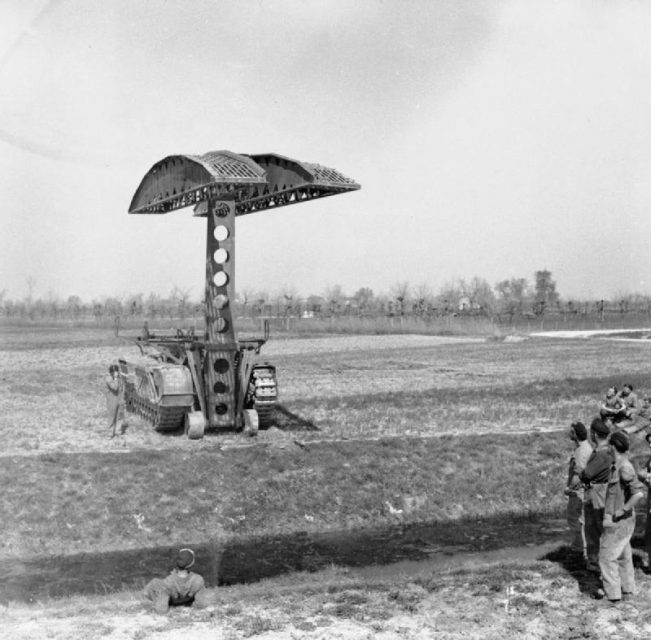
Crocodile
Many of the British Crocodile tanks were fitted with flamethrowers in the area where a ball turret machine gun would be placed on the hull of the tank. Flamethrowers were especially useful for attacking the many pillboxes and bunkers that made up the Atlantic Wall.
The flamethrowers used on the Crocodiles could emit a stream of flame a full 150 yards.
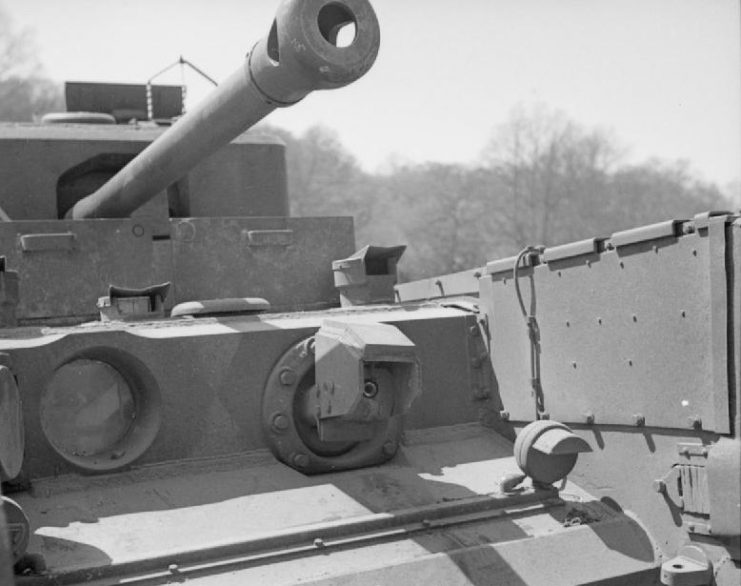
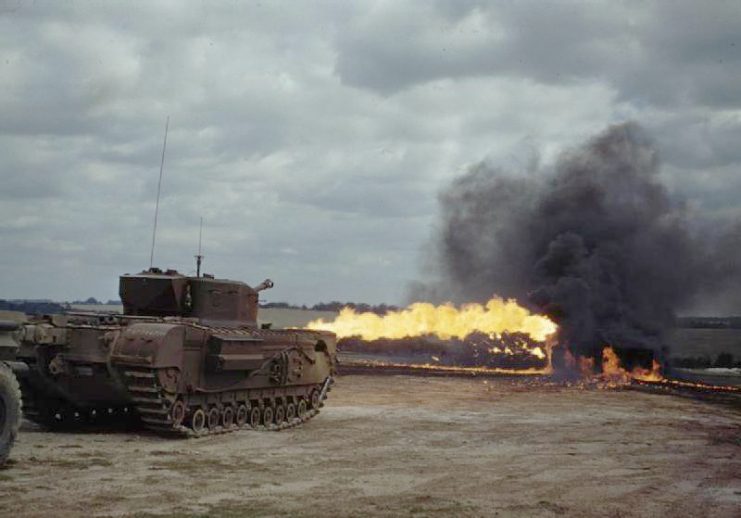
Crab
The “Crab” or “Flail” Sherman was designed to eradicate the effectiveness of German minefields. The Germans had years to prepare for an eventual allied assault and one way they were able to reduce the amount of manpower needed to defend the entire coastline was to install a plethora of minefields.
In anticipation of this, the allies developed armor units with revolving chains attached to set off these mines in advance of the vehicle and any personnel that would pass through an area. In addition to being effective in minefields, these tanks were also used at time against enemy infantry positions. They could present a very terrifying presence to opposing soldiers.
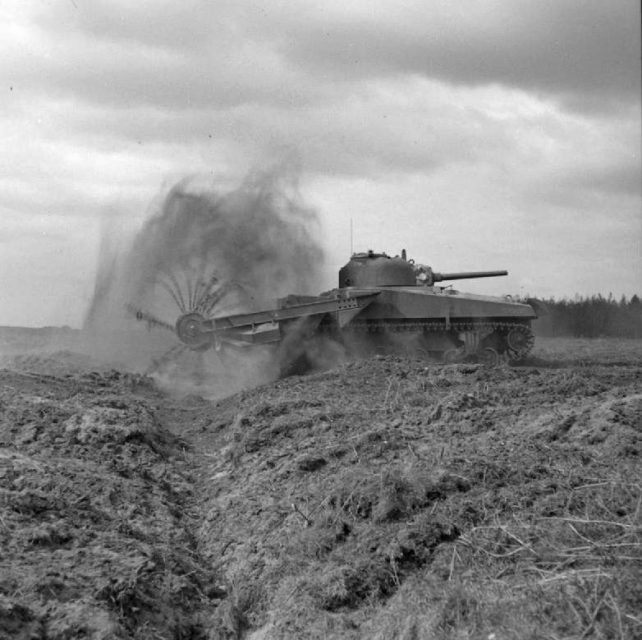
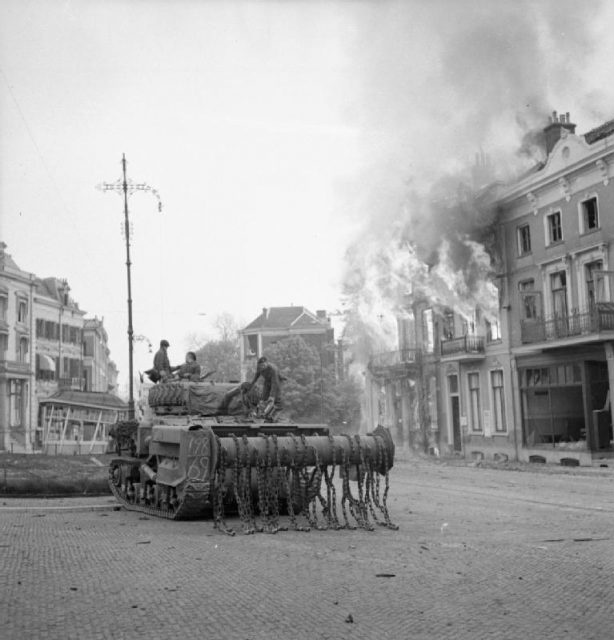
BARV
The Beach Armored Recovery Vehicle is just as it sounds. It was modified to recover vehicles that had become disabled either by “rollover”, a situation far too common with tanks, or by malfunction.
The tracks helped maintain stability and mobility, while the armor provided protection for those that operated them from enemy sniper or machine gun fire.
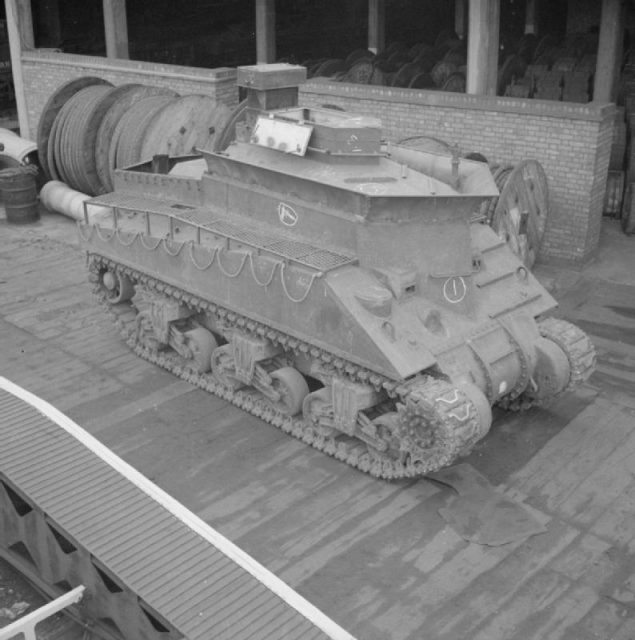
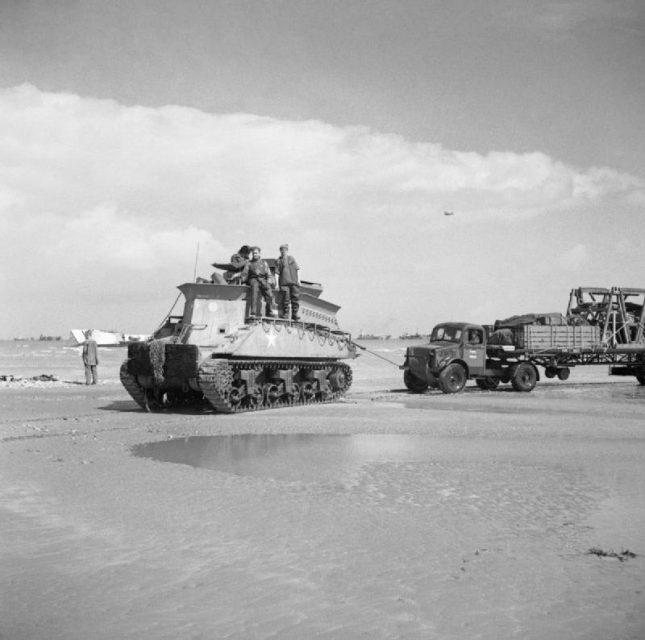
D-7 Bulldozer
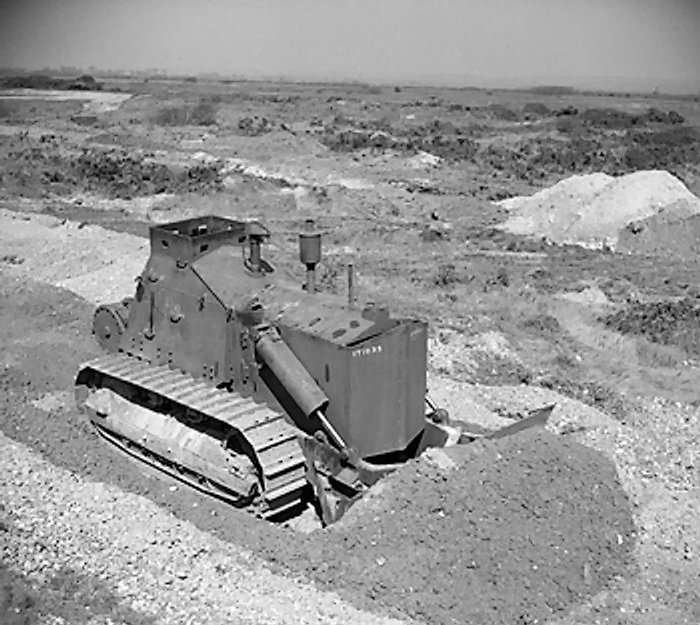
ARV
These vehicles known usually as Ram Kangaroos were first developed by the Canadians as a cheap armored personnel carrier, but their utility was quickly noticed by the British who used the Sherman chassis as well, but also converted some Churchill’s for the role.
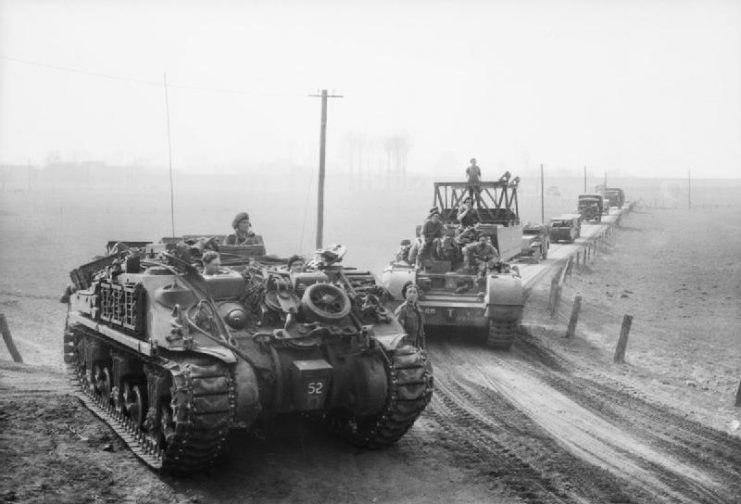
SBG
Another armored bridgelaying variant of used during the invasions.
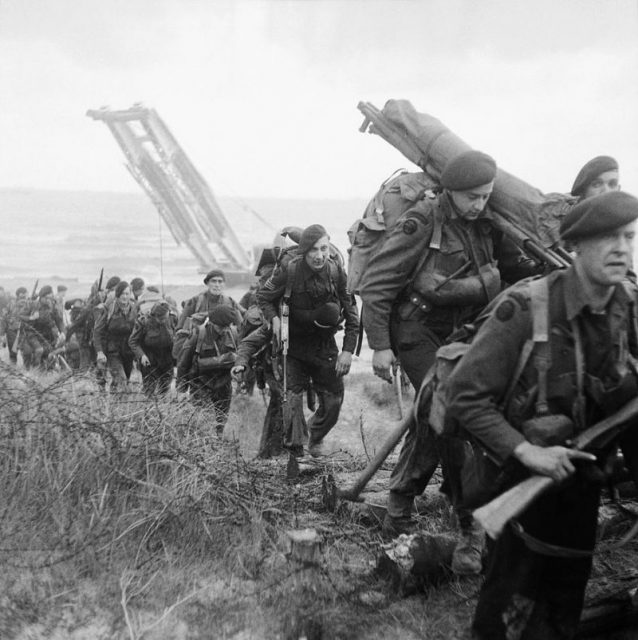
Sherman “Rhino”
These Sherman’s were modified first in Normandy after the landings and fitted with prongs on the front of their hulls to help cut through the thick Norman bocage that lined the roads and farms in the area.
The modifications were made using materials from the obstacles that dotted the landing areas on D-Day, but eventually a designated facility was created in Britain and the modifications were done before shipping new Shermans to the battlefield.
It is debated as to how effective these devices actually were, but they were no doubt intimidating to look at.
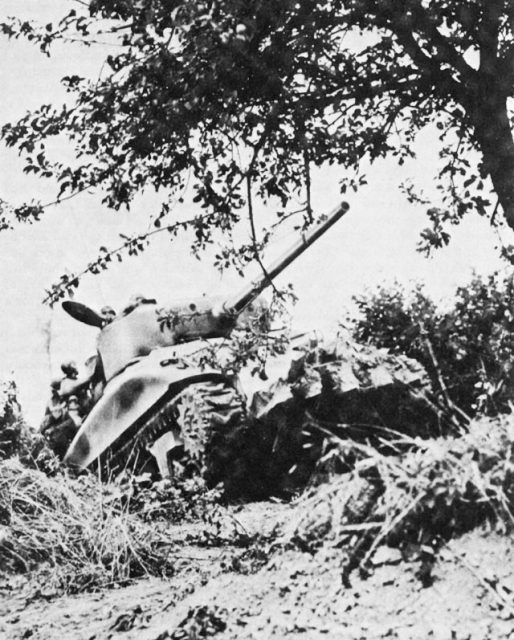
Conclusion
The overall effectiveness of the specialized armored units devised and used in the Allied invasion of Normandy in June of 1944 may be debated. While many of these innovations found significant use, others may have fell short of their intended purpose.
What we can surmise from these inventions is that the Allied commanders, leaders, and citizens were committed to giving their troops every necessary possible advantage for success on the beaches of France. If those troops should fail it would not be for a lack of effort and support on the part of those that were planning and preparing for it.
